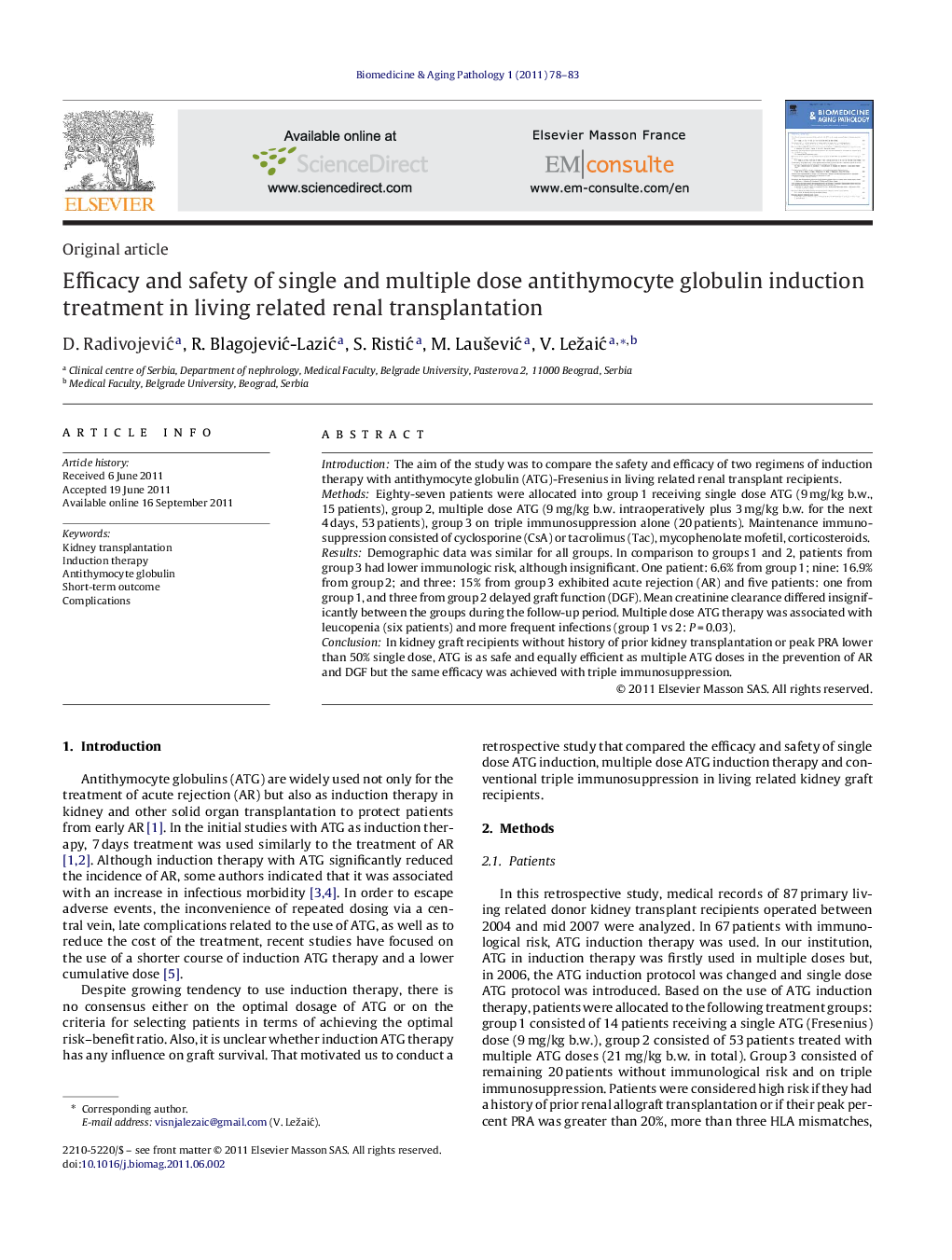| Article ID | Journal | Published Year | Pages | File Type |
|---|---|---|---|---|
| 2576354 | Biomedicine & Aging Pathology | 2011 | 6 Pages |
IntroductionThe aim of the study was to compare the safety and efficacy of two regimens of induction therapy with antithymocyte globulin (ATG)-Fresenius in living related renal transplant recipients.MethodsEighty-seven patients were allocated into group 1 receiving single dose ATG (9 mg/kg b.w., 15 patients), group 2, multiple dose ATG (9 mg/kg b.w. intraoperatively plus 3 mg/kg b.w. for the next 4 days, 53 patients), group 3 on triple immunosuppression alone (20 patients). Maintenance immunosuppression consisted of cyclosporine (CsA) or tacrolimus (Tac), mycophenolate mofetil, corticosteroids.ResultsDemographic data was similar for all groups. In comparison to groups 1 and 2, patients from group 3 had lower immunologic risk, although insignificant. One patient: 6.6% from group 1; nine: 16.9% from group 2; and three: 15% from group 3 exhibited acute rejection (AR) and five patients: one from group 1, and three from group 2 delayed graft function (DGF). Mean creatinine clearance differed insignificantly between the groups during the follow-up period. Multiple dose ATG therapy was associated with leucopenia (six patients) and more frequent infections (group 1 vs 2: P = 0.03).ConclusionIn kidney graft recipients without history of prior kidney transplantation or peak PRA lower than 50% single dose, ATG is as safe and equally efficient as multiple ATG doses in the prevention of AR and DGF but the same efficacy was achieved with triple immunosuppression.
